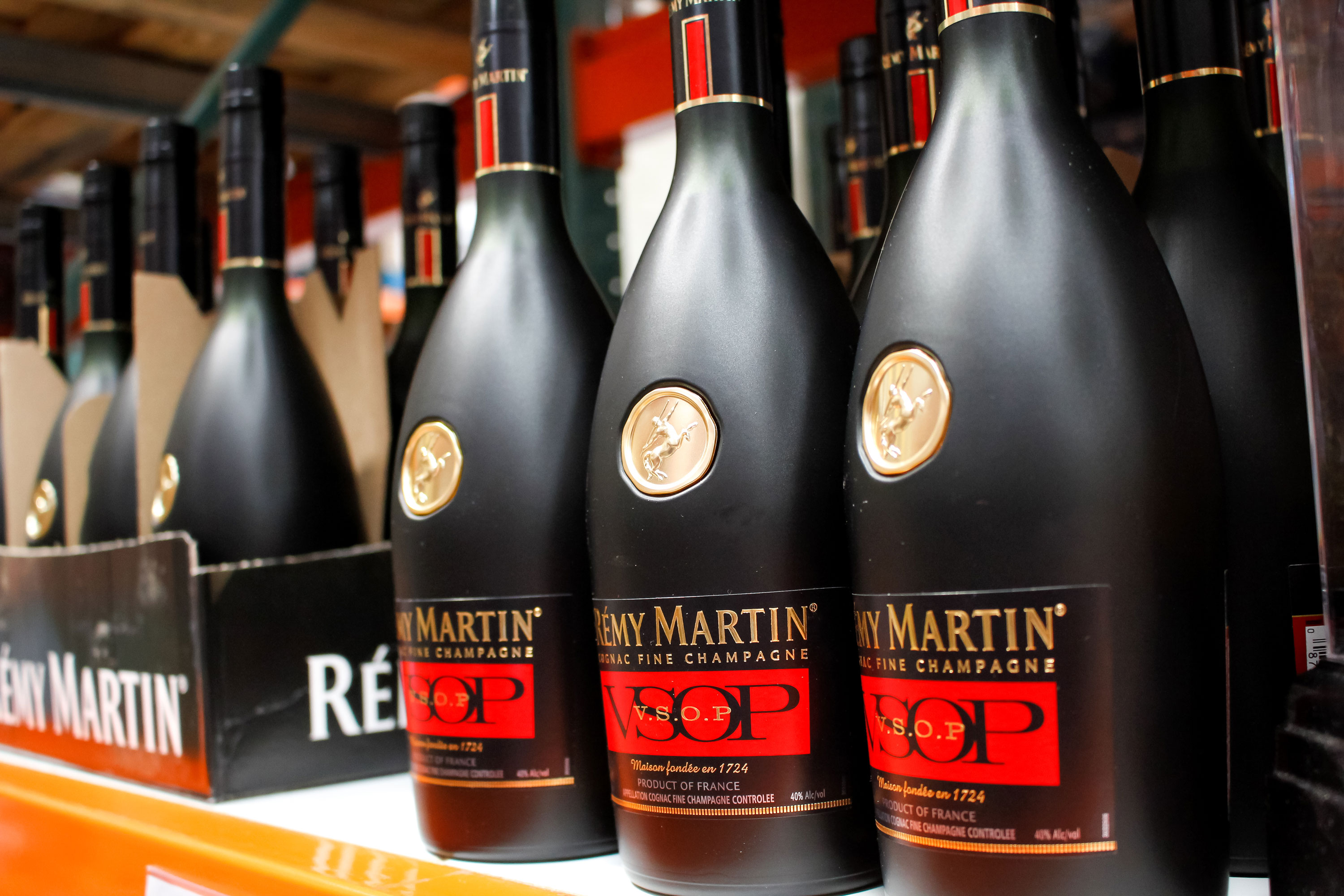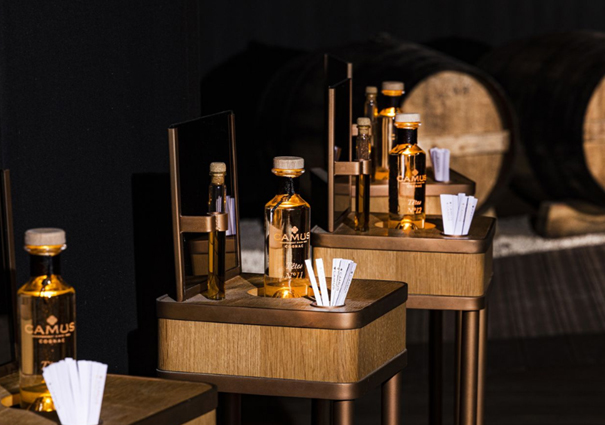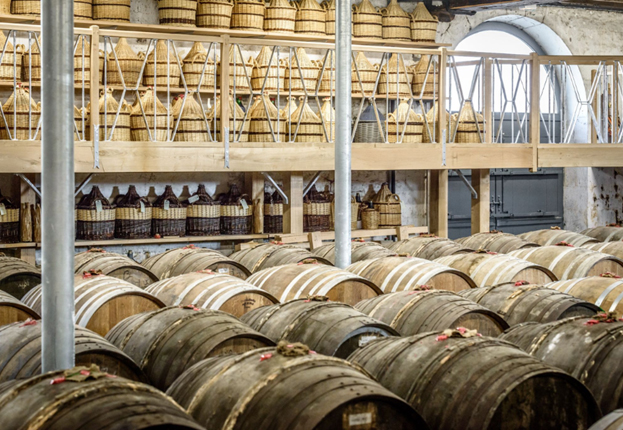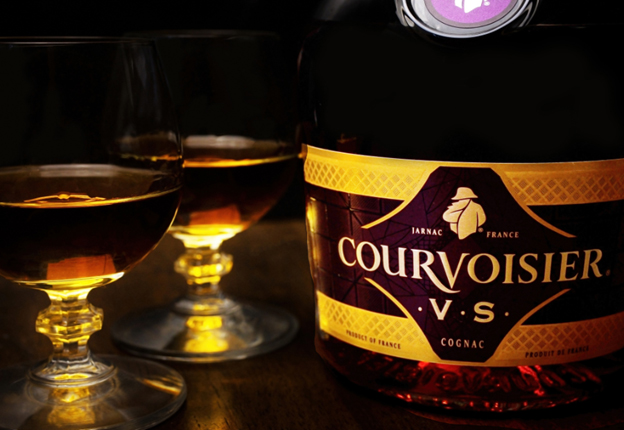Feature
Cognac’s distillers have faith in US upturn
Cognac has struggled in the US since the “pandemic party”. Will there be a recovery in 2024 or are there structural issues for the market?

Credit: The Image Party / Shutterstock.com
2023 marked another dismal year for Cognac in the US. Continuing the slowdown in sales since the peaks of 2020 and 2021, the major players in the sphere have all felt the effects, with Courvoisier, LVMH Moët Hennessy Louis Vuitton and Rémy Cointreau all in recent weeks underlining the pressure on their businesses in the US.
According to the Bureau National Interprofessionnel du Cognac (BNIC), global Cognac shipments were down by 22.2% to 165.3m bottles in 2023.
The bureau gives a figure for the NAFTA free-trade bloc of the US, Canada and Mexico (although the US dominates sales of Cognac among the three markets and is, alongside China, one of the two largest customers for the spirit worldwide).
The BNIC data shows sales in the NAFTA countries fell by 46.7% in volume terms last year to 61.2m bottles. By value, sales were €1.13bn ($1.22bn), down 41.2%.
Cognac is a category dominated by four companies – Rémy, LVMH, Pernod Ricard with Martell and Courvoisier (which is set to have a new owner).
For the first nine months of Rémy’s fiscal 2024, Cognac sales were down by more than a third on the previous corresponding period. The Rémy Martin owner labelled the US as a “persistently sluggish market”.
The pandemic boom: a poor benchmark?
Falling sales in the US will be a major cause for concern for all Cognac producers. According to the BNIC, as the country is by far the largest consumer of the spirit, importing more than half of all bottles produced.
However, the point of comparison could be making the problem seem worse than it is, according to Anne Blois, global commercial director for family-owned independent spirits house Camus Cognac.
Following a boom in demand for Cognac during the pandemic, retailers ordered a huge number of shipments to match. However, when demand did not resurface to the same level over the next couple of years, the US was left with a major overstocking problem.
The industry kind of panicked and declared the US is in big crisis.
Anne Blois, Camus Cognac
“So, in 2022, and certainly in 2023, the stock was so high that we hardly shipped anything in 2023 [speaking as the whole industry],” Blois tells Just Drinks. “I think the whole industry kind of panicked and declared that the US market is in big crisis, that this is the end of the world, the US is no longer going to be the big market and this and that.
“It's actually very much linked to a peak in 2020 and 2021 – and then overstocking during that period followed by a decrease in consumption compared with a very, very high peak in 2020 generated this lack of shipments to the US market.”

Credit: Camus Cognac / LinkedIn
When Rémy published its fiscal third-quarter and nine-month financial results last month, CFO Luca Marotta spent some time comparing the company’s nine-month performance versus the corresponding period in fiscal-year 19-20 (pre-Covid) to try to give a longer-term view of the company’s performance in Cognac.
“In North America, Cognac sales recorded a very strong decline in the [third] quarter but improving sequentially compared to the Q2,” Marotta said. “Sales are back to growth versus Q3 19-20, plus 10%.”
In a statement, the BNIC wrote: “The rise in 2021 followed by a fall in 2022 were two phases of the same phenomenon, which can now be considered unusual in terms of its intensity. From this perspective, the growth witnessed over the past few months should be viewed as a normalisation phenomenon.”
Looking forward to brighter days
Nevertheless, whether you compare Cognac’s 2023 performance in the US to pre-pandemic levels or not, there is a sense of optimism that the overstocking issues and lack of shipments will see themselves turned around in the near future, maybe even by the end of this year.
We have faith in the resilience and ability of the Cognac sector to bounce back.
Christophe Veral
“Producing and selling Cognac is always about anticipating in the long term. We have faith in the resilience and ability of the Cognac sector to bounce back,” former BNIC president Christophe Veral says.
“Today, we are making cautious decisions and are very determined in the work we are doing to boost our recovery, particularly the efforts undertaken by Cognac merchant firms on the markets. This work… will ultimately pay off.”
The association predicts the expected recovery “to match pre-Covid levels” from 2024 onwards, and that shipments will continue to recover this year at an “uneven pace”.
Jean-Sébastien Robicquet, the CEO of French spirits house Maison Villevert, says “the consumer is still there” for Cognac, which helps him remain optimistic for the category.
“[Softening demand] is not only affecting Cognac. This is affecting every category. Even Tequila is dropping nowadays in the US.
“I think it's very mechanical. It's not a lack of interest in the category or the spirit itself. It sounds mechanical.”
Maison Villevert, founded in 2001, is based in its namesake town and produces a variety of spirits including La Guilde Cognac, as well as Tequila, vermouth and gin.

Credit: Maison Villevert / LinkedIn
“In fact, consumption depletions in the US dropped by 15% last year when shipments dropped by 40%,” Robicquet continued. “So, the difference between 15 and 40 is 25%, which is very critical because they want to empty the warehouse. But that's my point of view. Maybe I'm wrong but I simply believe that.”
Robicquet believes macro-economic conditions are a more considerable cause of sluggish Cognac sales in the US than people think, but they “could improve” due to the Presidential election towards the end of 2024.
He adds: “I think everybody is concerned about the crisis and we see that growers are starting to be irritated. It's quite influenced by the interest rates. It's going to be an election year in the US, so probably the interest rate will drop as it does for every election year.”
At Camus, the US is not the company’s main market, but Blois is positive about the prospects for recovery.
“For Camus, I would say that in 2024, we expect growth, and we expect the market to actually return to growth for Cognac as a segment. The consumer confidence is not completely back but it's there.”
Camus Cognac’s main market is China, Cognac’s other giant consumer. The distiller’s position in the market across the pond is an interesting one. Due to the domination of the ‘big four’ in US Cognac, Camus’ market share is “tiny”, according to Blois.
“We're not at all in that [overstocking] situation because the US market is not our number one market. It's a strategic market, a market where we enjoy growth year after year. In 2020 and 2021, like the rest of the industry, we really enjoyed bigger growth but based on the much smaller volume than the other big ones. We didn't really have that overstock effect on our side.
“In 2023, the market for us did not decline – we actually were flat on 2022 because we were not overstocking so we did not grow as such because the retailers and the distributors, they were full of stocked Cognac of the big four. They were a little bit reluctant to spend cash flow in order to order other brands, much smaller brands like us in order to continue the normal growth. So that's what's happening in the US right now.”
Just Drinks approached Pernod, LVMH, Rémy and Courvoisier to comment.
The competition
Cognac is facing stiff competition in the US, principally from agave-based spirits, with Tequila at the centre.
Demand for Tequila is easing but data from the National Alcohol Beverage Control Association (NABCA) still showed US sales in 2023 hit $2.33bn, marking a year-on-year increase of 12%. Volumes were up by 9.8% at 6.5m nine-litre cases.
The meteoric rise of the agave-based spirit over recent years has presented a strong alternative to Cognac: generally priced more reasonably but still holding a ‘premium’ position on shelves.
The NABCA figures – which cover 17 states and jurisdictions in the US – highlighted that Cognac/brandy volumes fell 8.7% to 2.6m nine-litre cases. Sales value declined by 10.9% to $840m. In December, Cognac/brandy was the worst-performing category falling by 5.9% in value and 4.5% in volumes.
In a column for Just Drinks during 2023, wine and spirits commentator Richard Woodard wondered what might lie ahead for Cognac in the US. “What we’re seeing in Cognac right now could just be ‘normalisation’ – as brand owners say (and hope) – but it could be something deeper. It could be Cognac being squeezed by the dynamic agave category, not to mention other premiumising segments, such as US whiskey and rum.”
He added: “Cognac has had a great run in the US over the past couple of decades but I wonder if we may be entering a new phase, one where growth becomes far more elusive and a fresh approach is required.”
The takeover of Courvoisier
Perhaps the most striking piece of M&A in the drinks industry in 2023 was Campari Group’s deal to buy Courvoisier from Beam Suntory for up to $1.32bn.
The deal, which is awaiting completion, could be argued to be a vote of confidence in the sector.
Campari CEO Bob Kunze-Concewitz said the group was upbeat about the future of Cognac.

Credit: MarianCom / Shutterstock.com
“We’re pretty bullish on the long-term perspective of the Cognac category. If we weren’t, we wouldn’t be spending €1.2bn to make an acquisition,” the outgoing Campari told analysts after the transaction was announced in December.
“We think that what is happening in the US currently is not structural and, really, cyclical. And if you look at the progression of the category in recent months, it’s starting to normalise.”
Campari clearly believes in the value of the Cognac brand and the future of the sector – and the company has some experienced former Cognac executives to call on. Former Rémy CEO Jean-Marie Laborde and ex-Moët Hennessy chief executive Christophe Navarre are board members.
The US is showing signs of improvement but it’s still too early to call the bottom.
Trevor Stirling, AllianceBernstein
Trevor Stirling, an analyst at US investment bank AllianceBernstein who covers Campari, favoured the Italian spirits group’s move for Courvoisier. “We like the deal. It’s strategically attractive. We have long viewed Cognac as a structurally attractive category, notwithstanding the boom and bust in the US over the last few years,” he said after the transaction was announced.
“The long-term opportunity is to sprinkle some Campari stardust on the marketing to benefit from the structural strong price and mix story, plus volume growth in China, East Asia and Eastern Europe.”
However, when Rémy announced its nine-month figures last month, Stirling still had notes of caution to offer investors. “The US Cognac market is showing some signs of improvement in the published data and Rémy Cointreau's rate of decline is slowing, but it is still too early to call the bottom.”